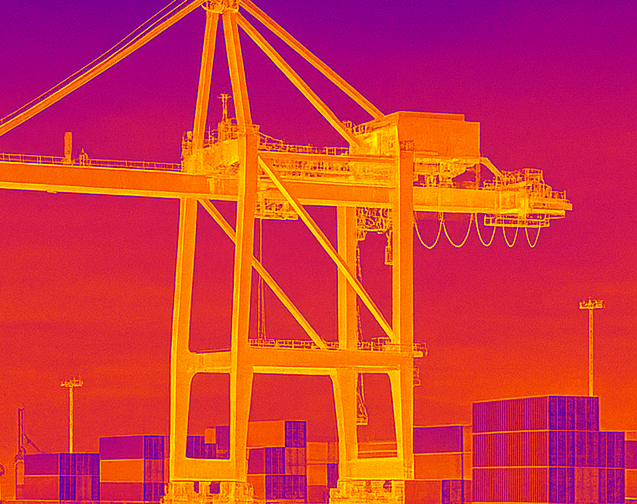SafeForPorts+: multimodality and infrared imaging for predictive maintenance
After the success of SafeForPorts, SafeForPorts+ evolves the platform with a multimodal framework, integrating new layers of visual and infrared data analysis.
Thanks to the collaboration between InformAmuse, Tenova (1) and Prosoft Intesys S.r.l. (2), this new phase aims to consolidate previous results and enhance them with advanced multimodal computer vision capabilities, integrating both standard and infrared images. This combination strengthens predictive maintenance, making it more accurate and timely.
Multimodal Innovation
SafeForPorts+ introduces the combined use of infrared imaging techniques and artificial intelligence algorithms for the automatic detection of anomalies and wear signs. Leveraging heterogeneous and expert-annotated datasets, the system will be able to:
- detect cracks and surface defects visible in traditional images;
- identify overheating and thermal anomalies through infrared imaging;
- provide more accurate automatic alerts, improving maintenance planning and scheduling.
A Collaborative Ecosystem
The project is part of a broader ecosystem that brings together leading industrial and technological partners:
- Tenova, providing know-how and maintenance materials;
- Prosoft Intesys S.r.l., contributing expertise in software architectures and integration;
- MV Maintenance (3), which will continue to support on-site testing to validate the solution in real operational environments.
Towards the Ports of the Future
With SafeForPorts+, a decisive step is taken towards creating safer and more efficient ports, where predictive maintenance is supported not only by visual data but also by integrated thermographic information.
This technology will make it possible to anticipate failures, reduce downtime, and optimize operational efficiency.
SafeForPorts+ continues along the path initiated under the RAISE – Ecosistemi dell’Innovazione in Sicilia call (CUP: J53D23020600005), extending the results of SafeForPorts and projecting them towards new applications for the port industry.

